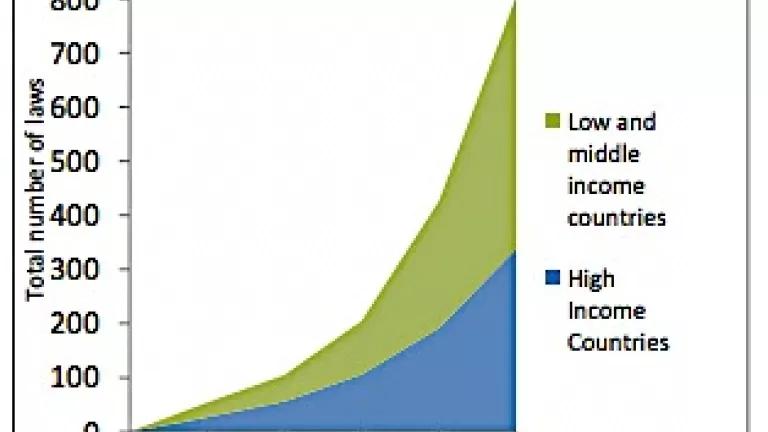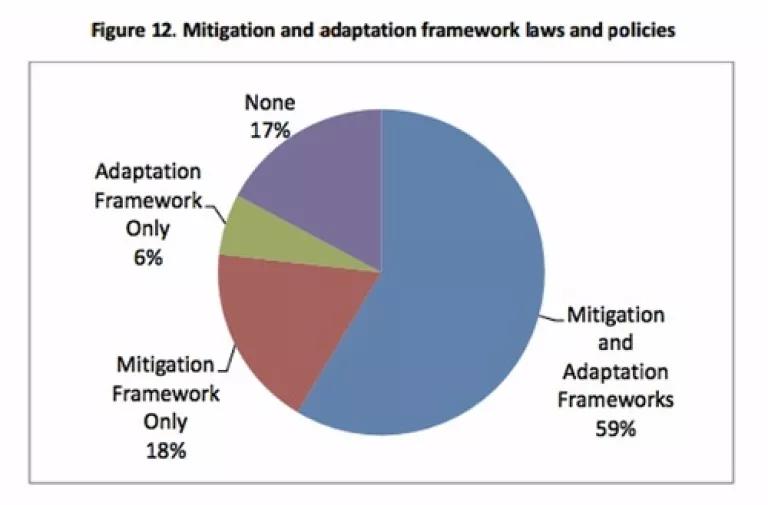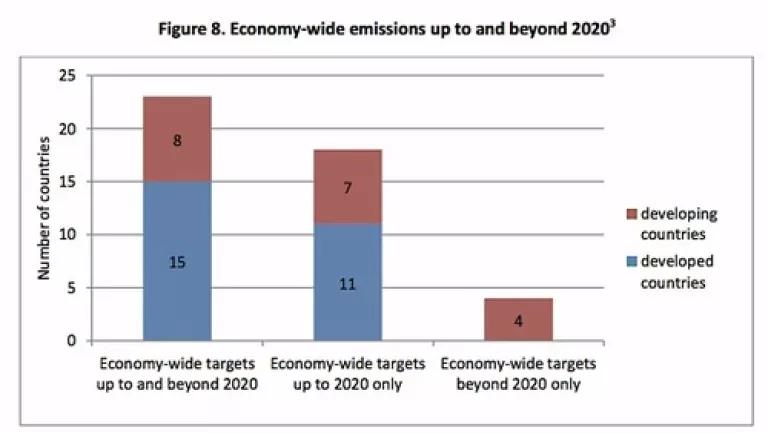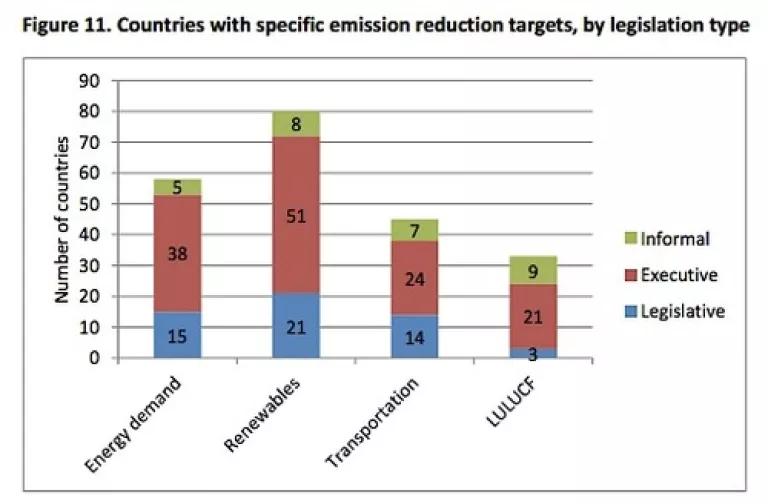Climate laws and policies have doubled every five years since 1997: Global Climate Legislation Study

This blog was co-written with Jean Zhuang
The 2015 Global Climate Legislation Study comes at a pivotal time in international climate diplomacy, as countries will be meeting for the UN Conference of the Parties in December of 2015 to discuss each country's intended actions for dealing with climate change. Without implementation of international climate agreements through national legislation and policies, these agreements have little impact. Fortunately, the latest report from the Grantham Research Institute on Climate Chance and the Environment, the Global Legislators Organization (GLOBE), and the Inter-Parliamentary Union (IPU) makes clear that national climate change legislation and policies directly related already exist in countries responsible for 93 percent of global greenhouse emissions, including 46 of the world's top 50 emitters.
2015 Global Climate Legislation Study provides "cautious cause for optimism"
Since 1997, the number of climate change laws and policies has doubled every five years. In 1997, there were only 54 laws and policies, rising to 426 in 2009 when the Copenhagen Accord was signed. By the end of 2014, there were 804 climate change laws and policies (see figure below). The majority of climate laws have been passed in developing countries, signaling a willingness by all parties to deal with climate change. The study rightfully notes that it is time to shift from just enacting legislation to the execution of existing legislation and commitments.
Countries that passed new comprehensive framework laws on climate change in 2014 include Bulgaria, Chile, China, and Mozambique. By the end of 2014, 58 countries (out of 99) had framework laws or policies in place to address both mitigation and adaptation. Seventeen countries did not have any framework laws or policies in place, including Saudi Arabia and Canada (the only two out of the top 20 emitters without any national climate framework legislation).

The study further reveals that much of the growth of laws and policies passed in 2014 has come from developing countries. In addition, there has been a definite shift from laws passed by the legislative branch towards policies passed by the executive branch, which the study notes, "may signal a greater emphasis on implementation" of existing laws.
All but one of the 99 countries in the study has published greenhouse gas inventory data and conducted some form of climate change risk assessment, although the assessment quality varies enormously. Half of the countries have only minimal climate change risk assessments, meaning that their adaptation plans do not go beyond the minimal reporting requirements to the UN Framework Convention on Climate Change. Not surprisingly, the quality of national risk assessments depends on the capacity level of countries, and most of the countries completing only minimal risk assessments are developing countries. Because they are most vulnerable to climate change, the study emphasizes, these countries will need technical assistance to prepare for future climate risks.
Quality and quantity of legislation matters
The study reviewed short-term and long-term targets set out by countries, both of which are necessary for successful climate policy. Forty-five of the countries have economy-wide emission reduction targets, which account for over 75 percent of global emissions. Forty-one countries have economy-wide targets up to 2020, and 22 have targets that extend beyond 2020. Eighty-six countries have targets for specific sectors rather than economy-wide targets - including renewable energy, energy demand, transportation, or land use change and forestry. The majority of issue-specific targets are executive policies, rather than laws enacted by legislature.


-------
The number of climate laws has nearly doubled in the past five years, and over 75 percent of global emissions are subject to an economy-wide emissions reduction target. While the study revealed that current policies do not put the world on the path to avoiding global warming of more than 2°C, it is clear that the pace and breadth of climate action is accelerating, and we are likely to see even more policies enacted around the world in the lead-up to the Paris climate conference, as countries raise their levels of climate ambition.
